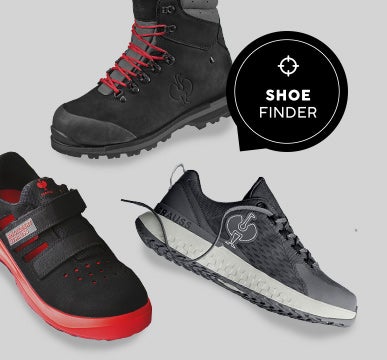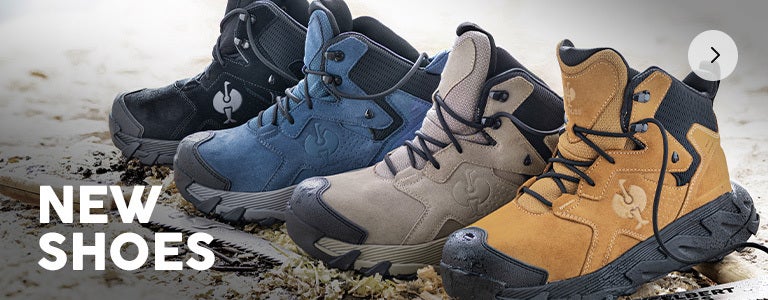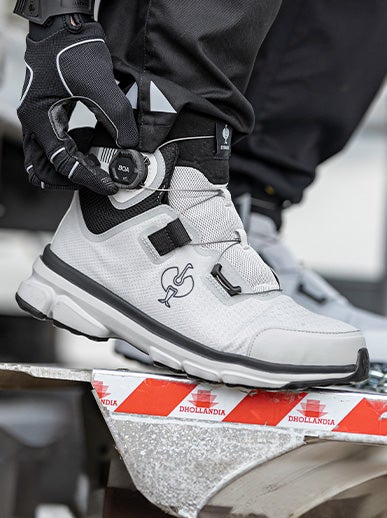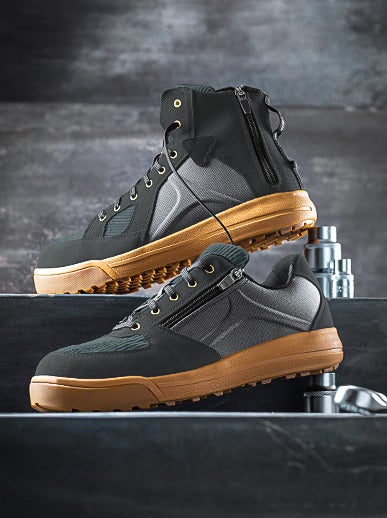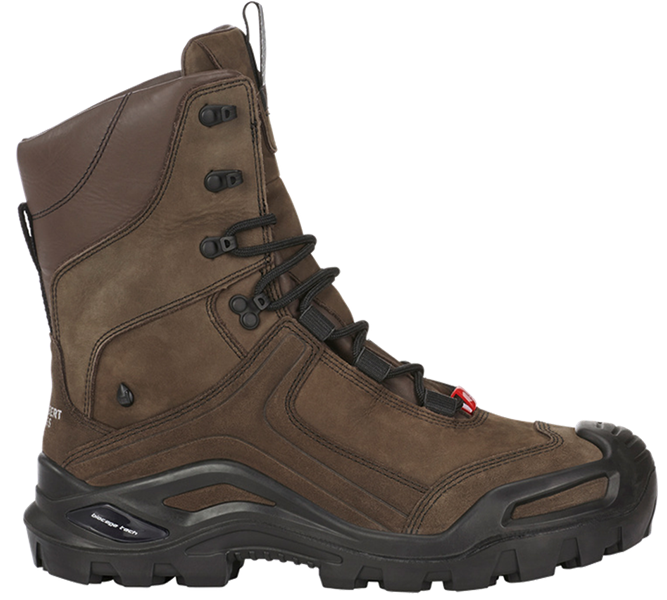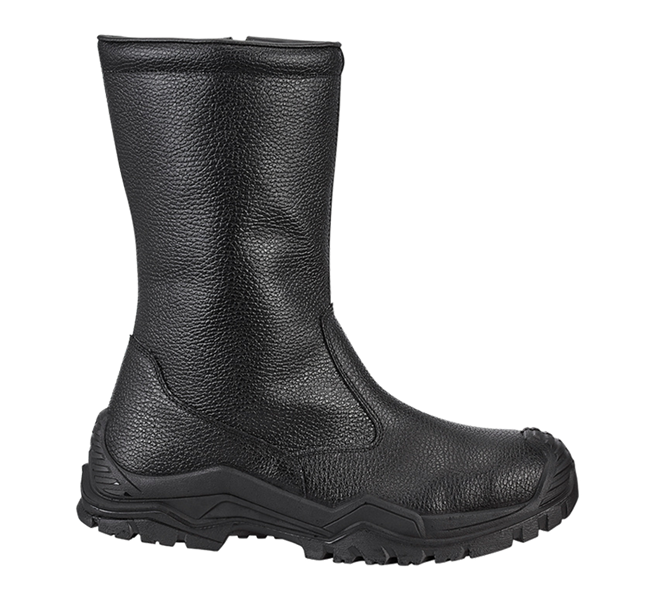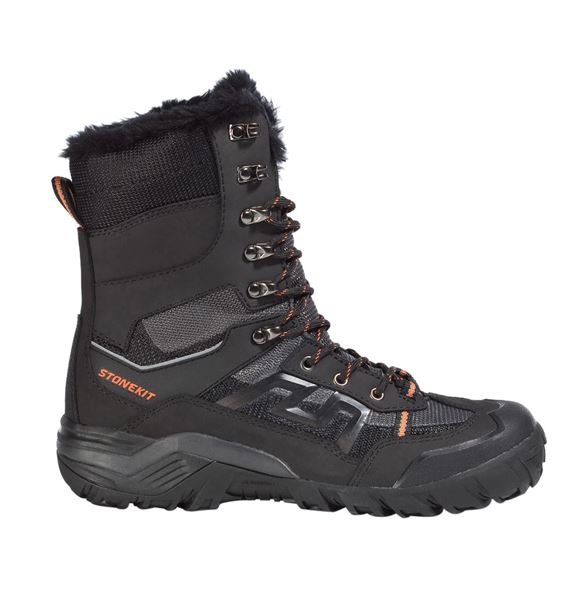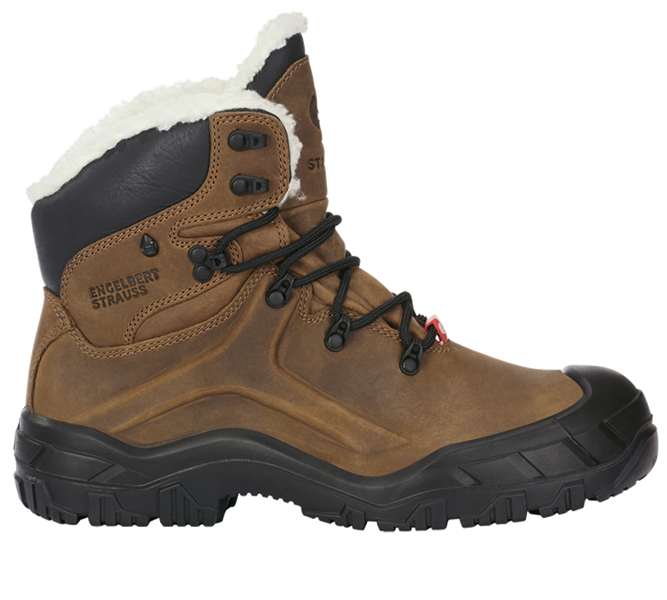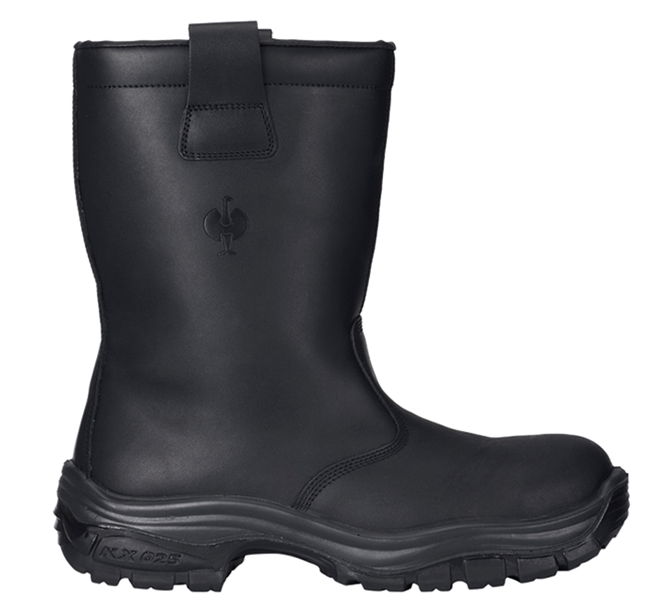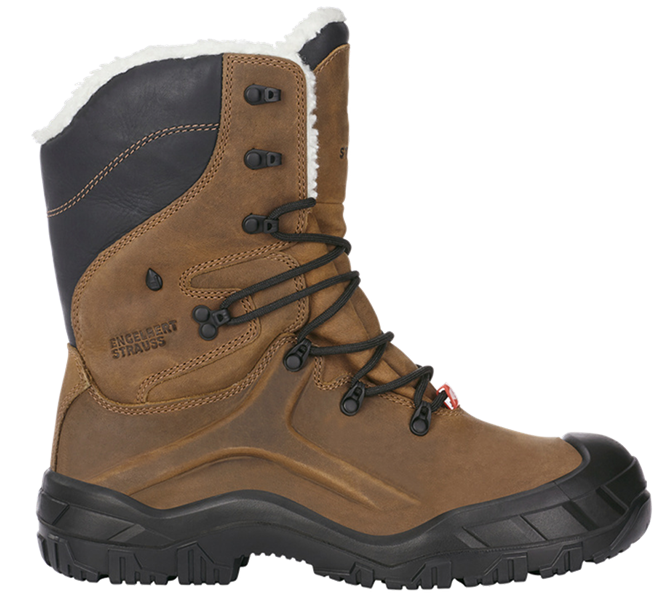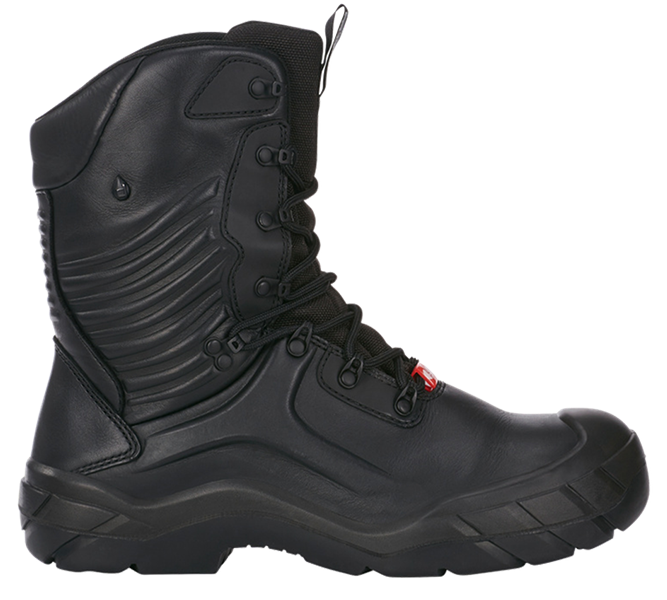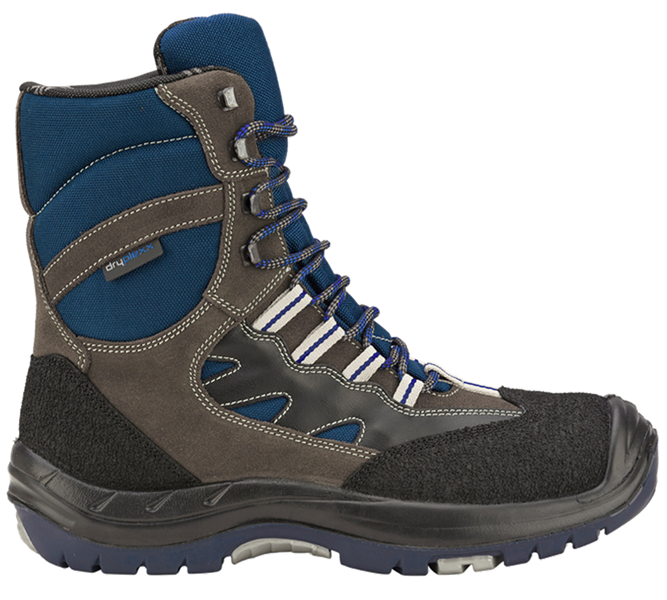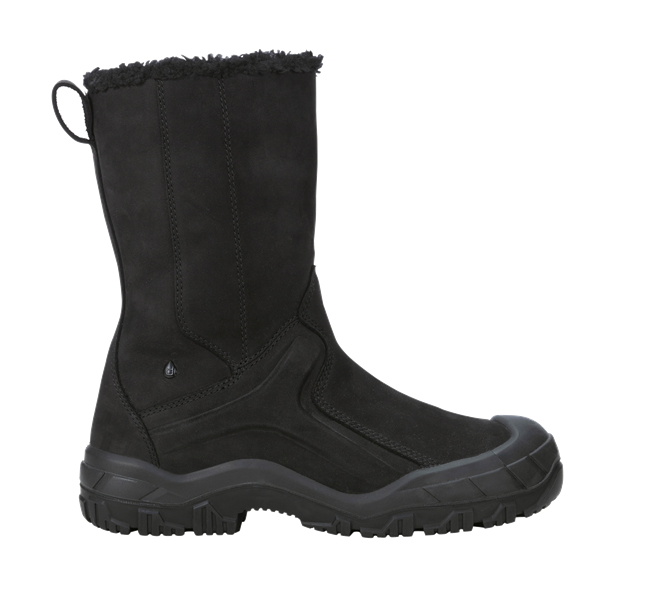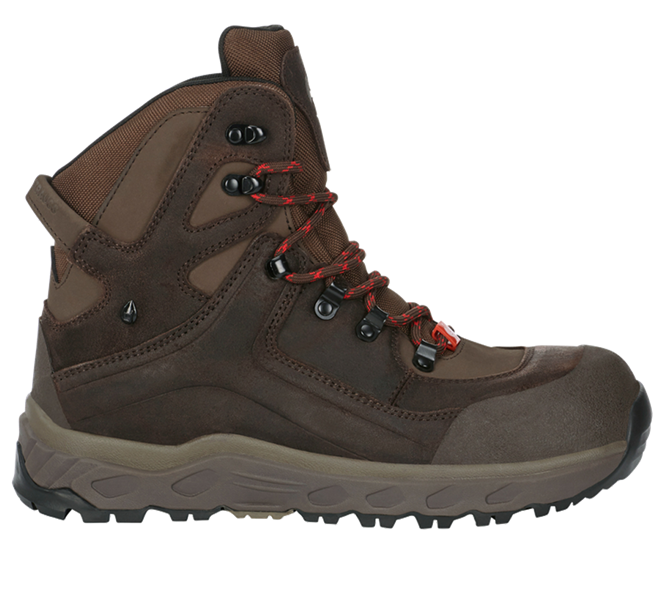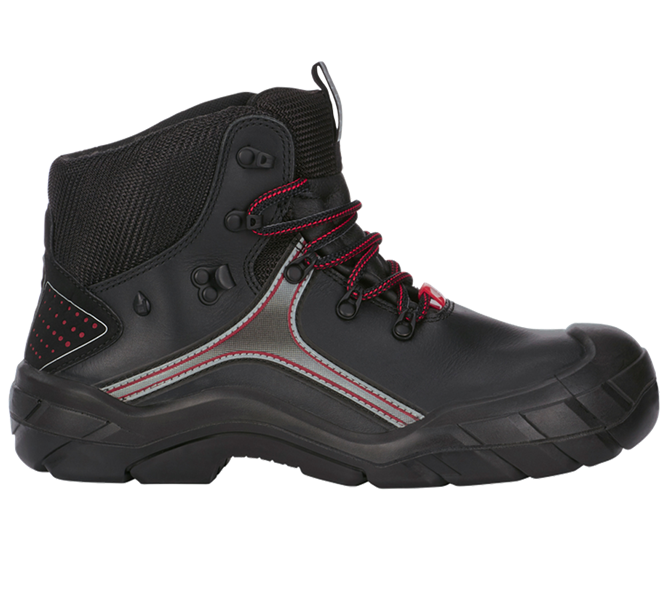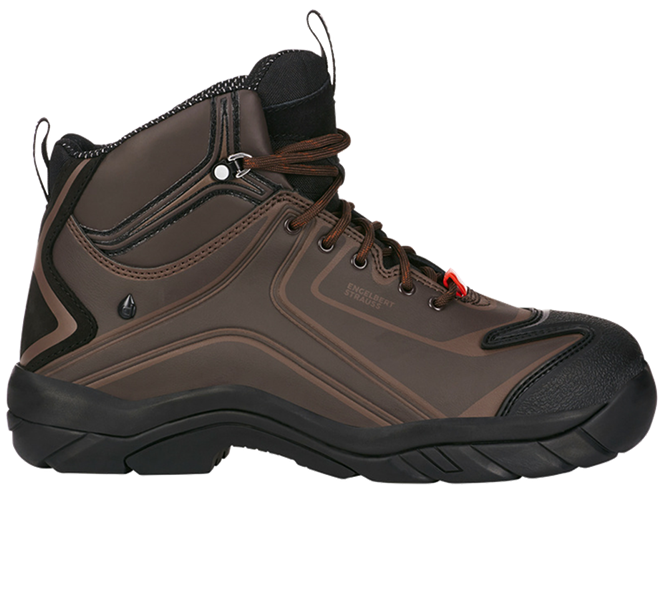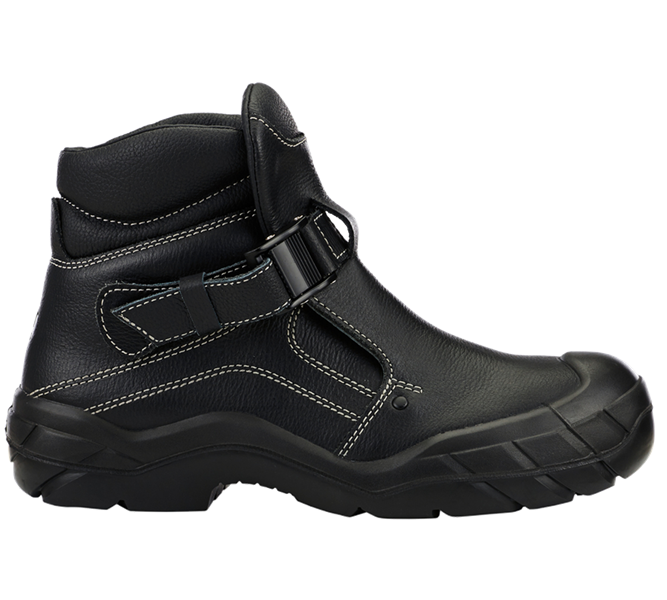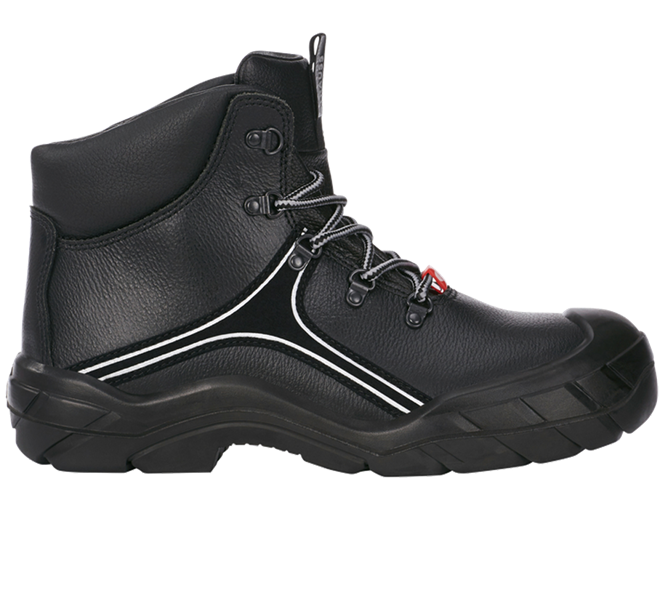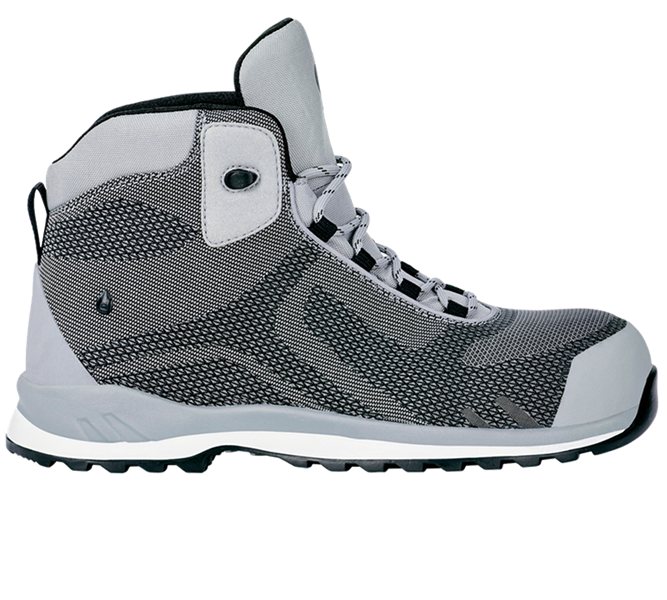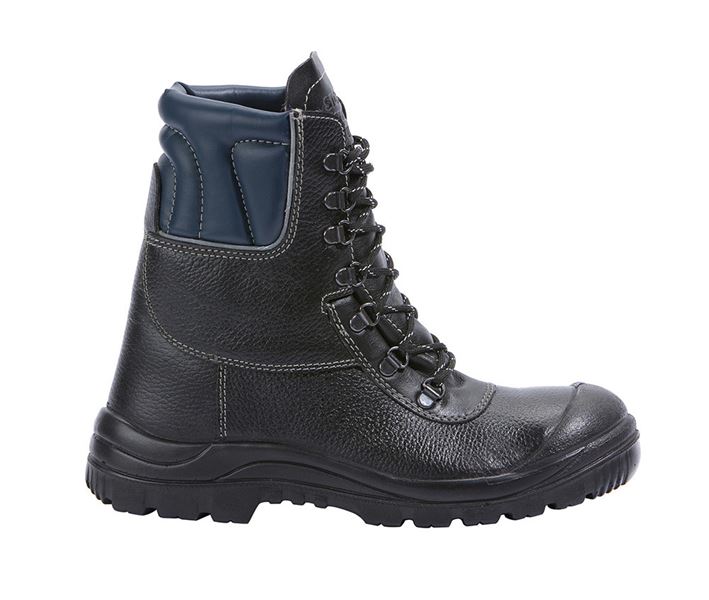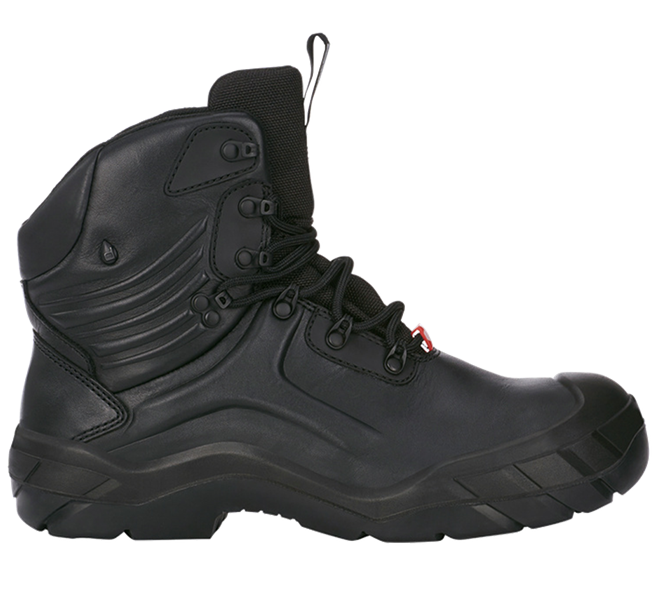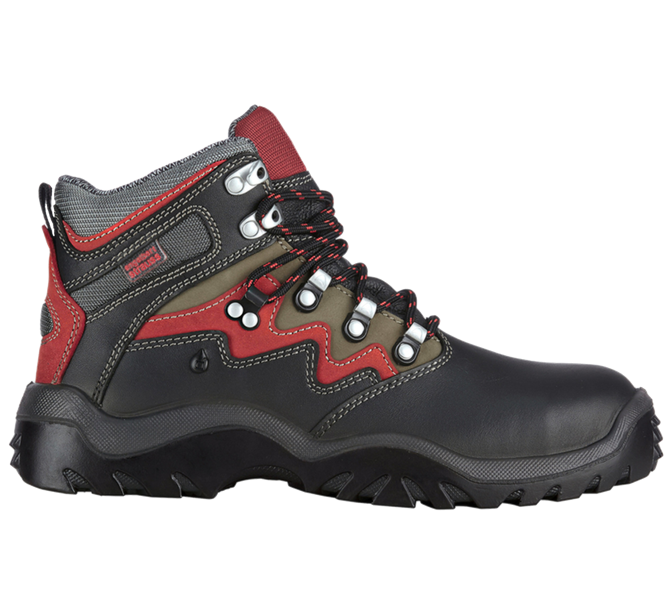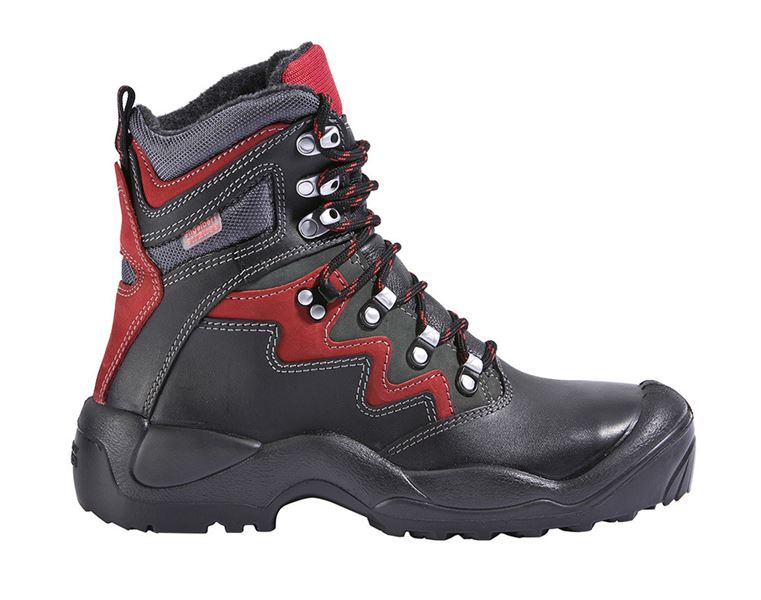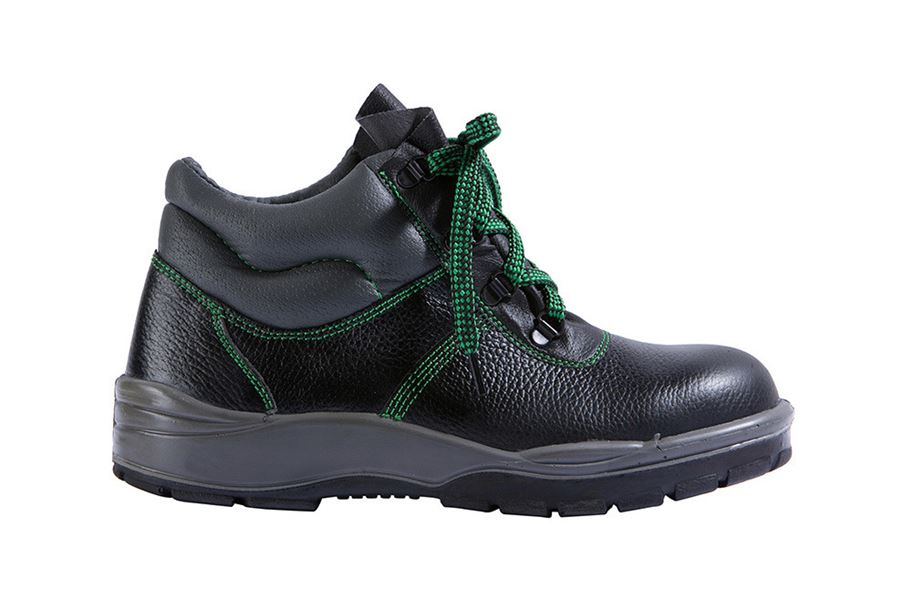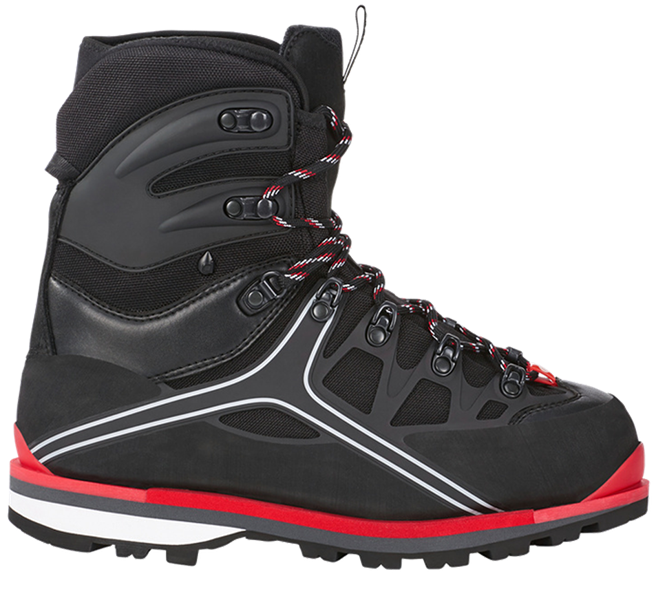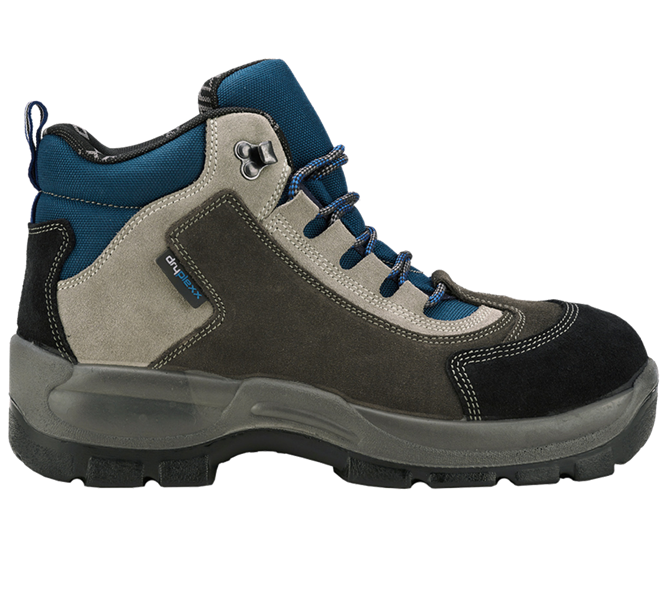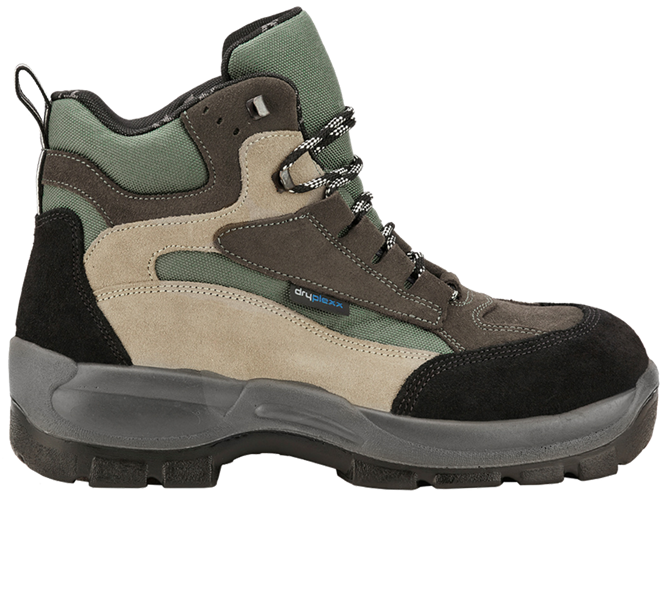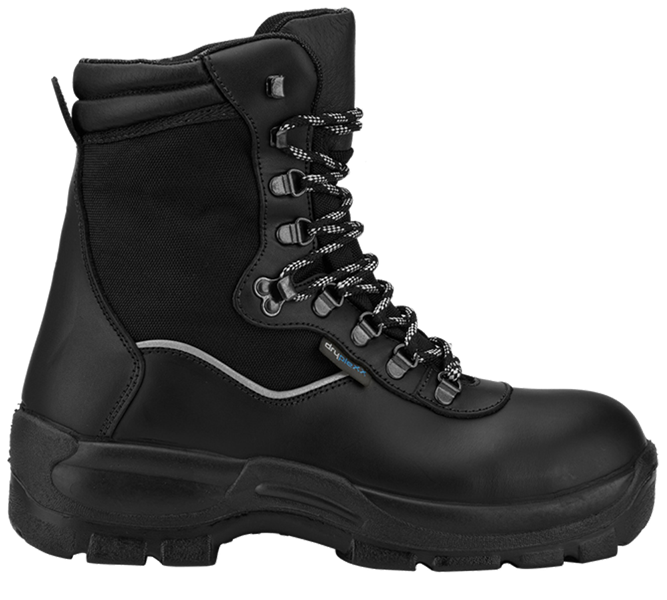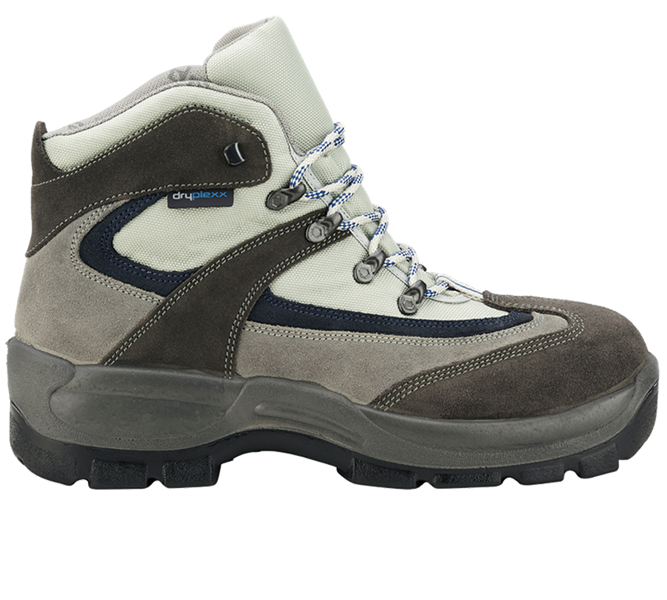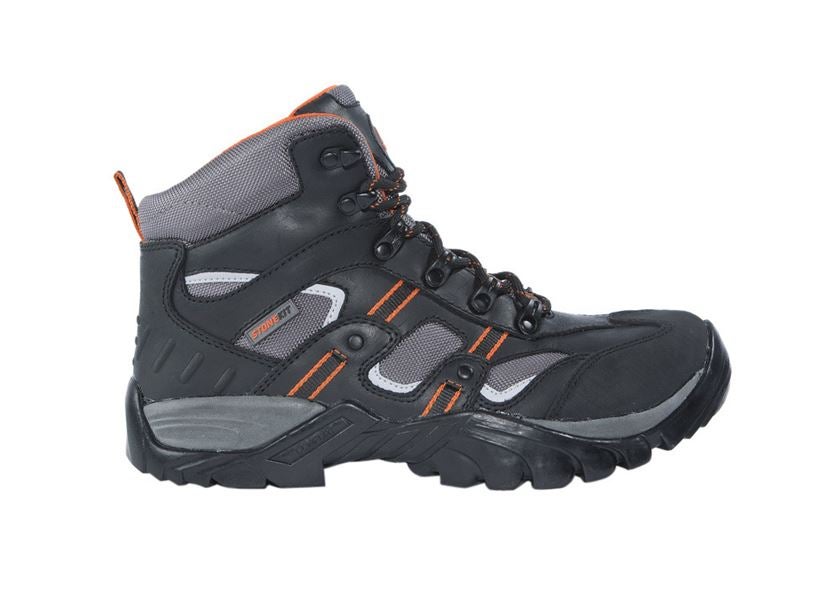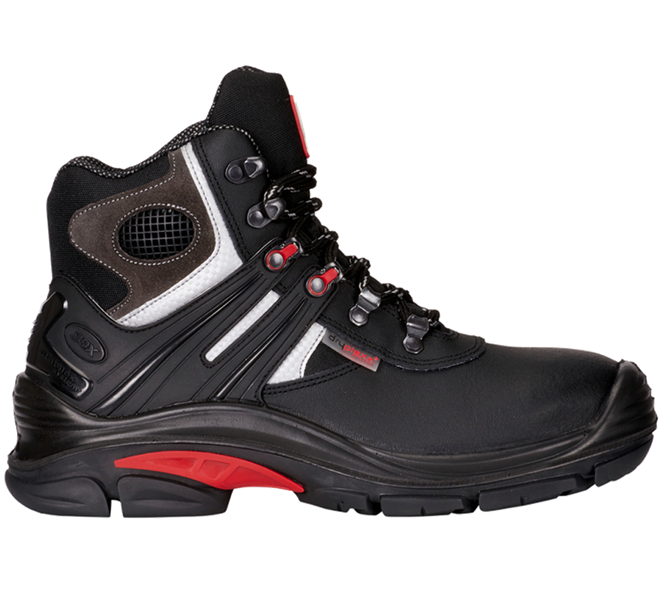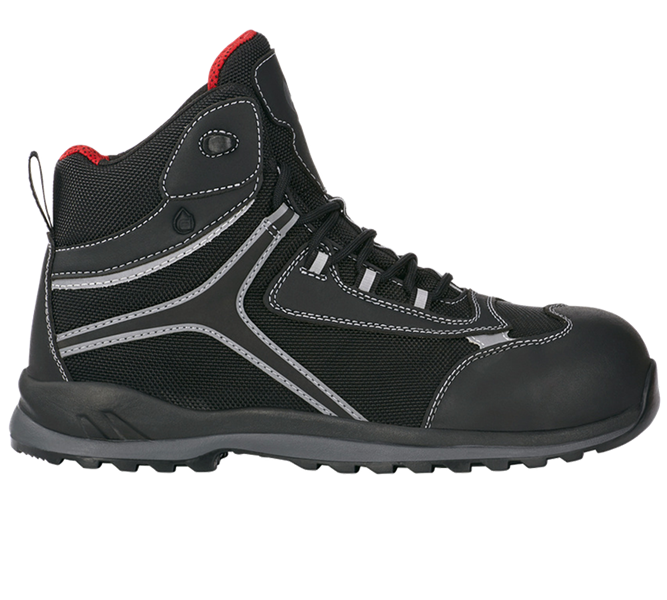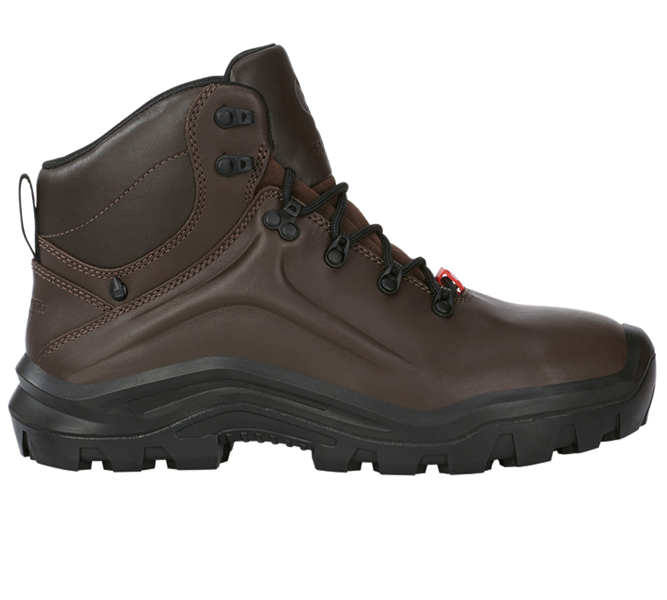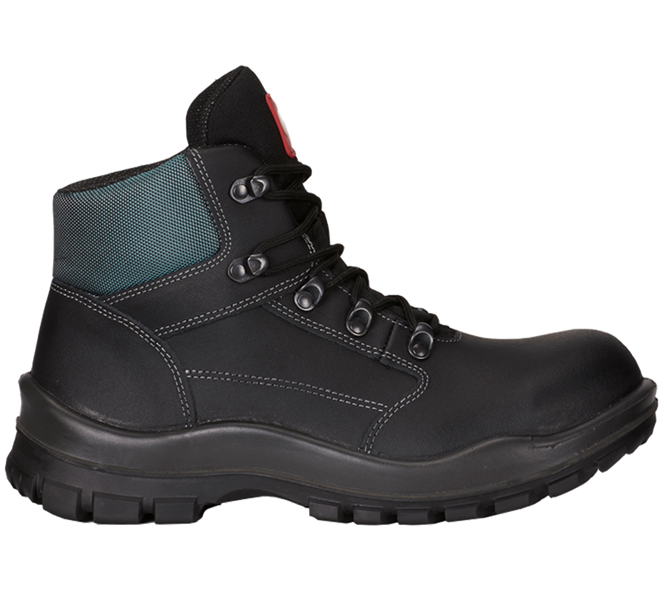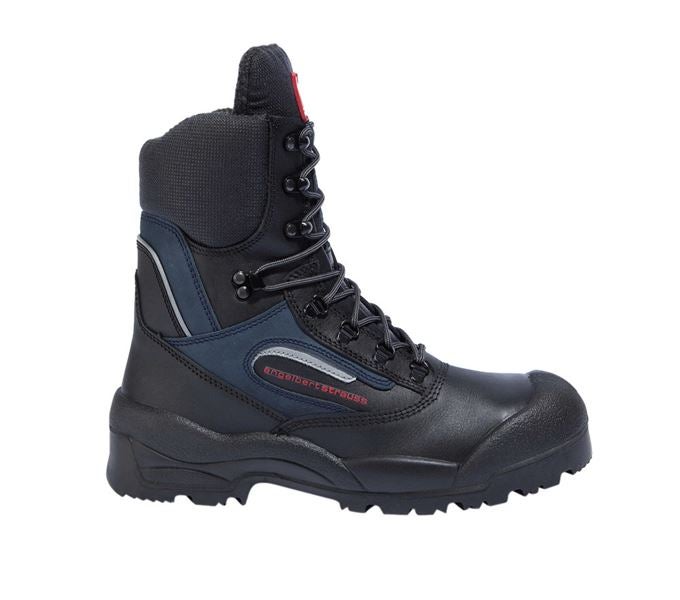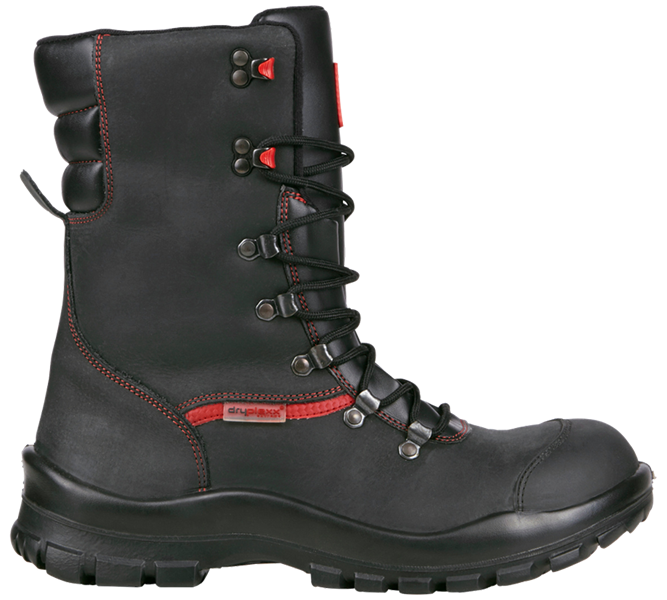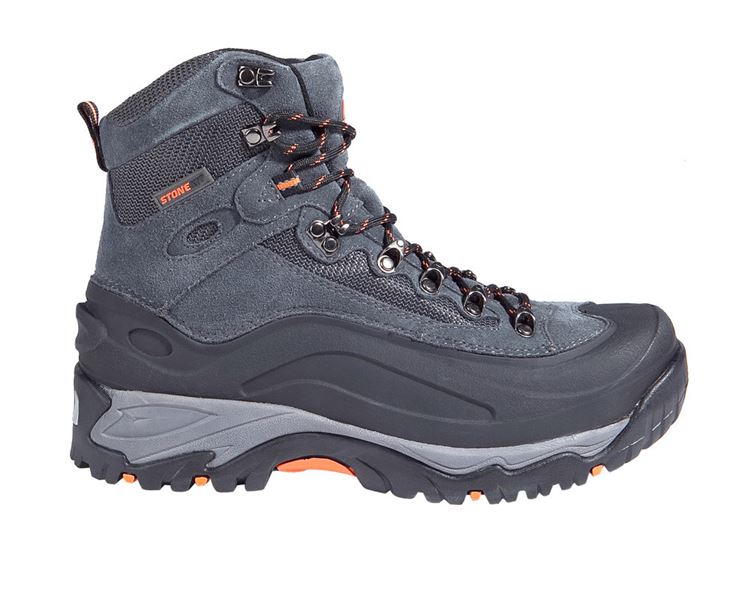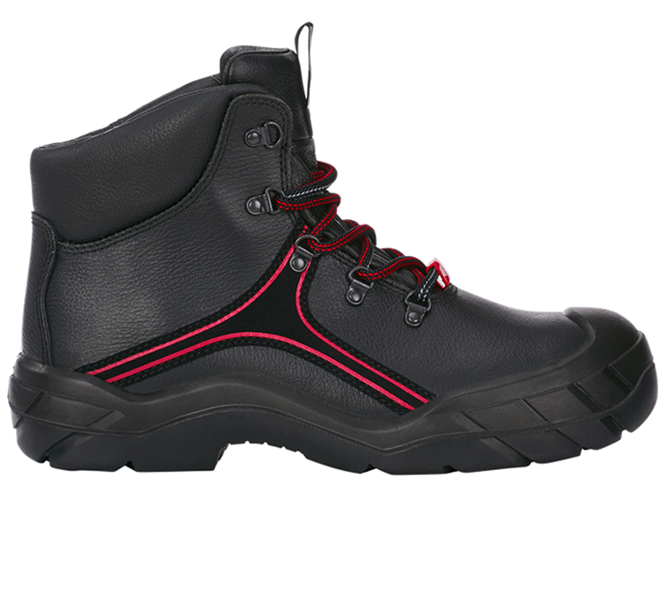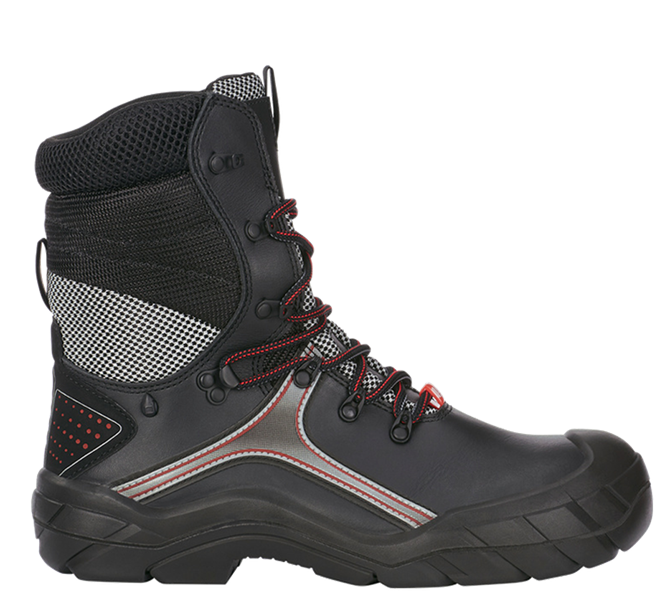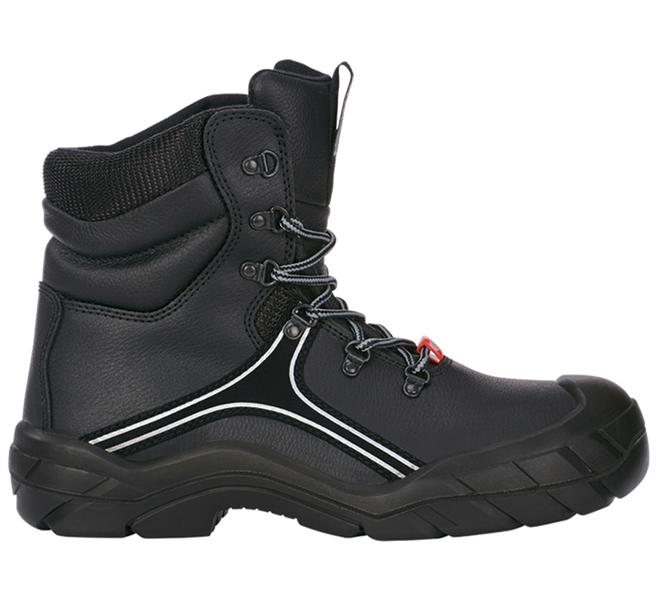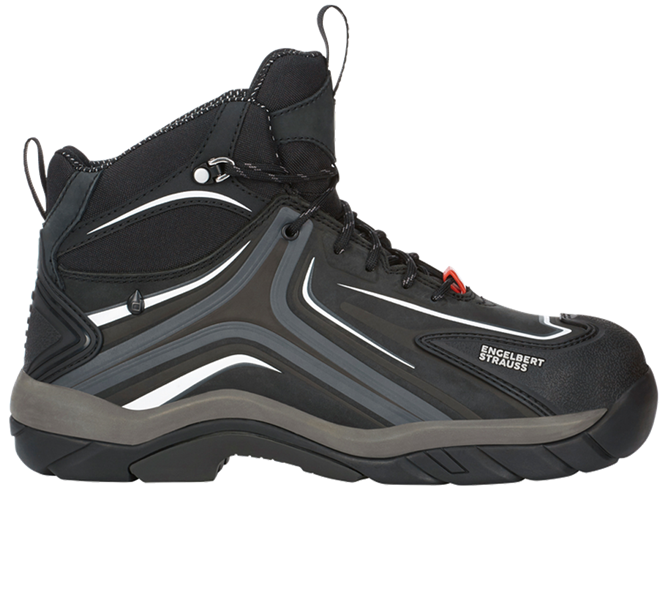With puncture-resistant steel sole

EN ISO 20345
- Alu-, plastic or steel toe cap
- Puncture-resistant sole
- Antistatic properties (A)
- Profiled sole
- also possible: Fuel resistance of the sole (FO)
- Anti-Slip
- Closed heel area
- Energy absorption in the heel area (E)
- No water penetration for a maximum of 60 minutes
S3 |
S3L |
S3S
Like S3, also with puncture resistant textile sole standard requirement (tested with a ⌀ 4.5-mm nail).
Like S3, with puncture resistant textile sole standard acc. to higher requirement (tested with a ⌀ 3.0-mm nail).
- Alu-, plastic or steel toe cap
- Puncture-resistant sole
- Antistatic properties (A)
- Profiled sole
- also possible: Fuel resistance of the sole (FO)
- Anti-Slip
- Closed heel area
- Energy absorption in the heel area (E)
- No water penetration for a maximum of 60 minutes
S3 |
S3L |
S3S
With puncture-resistant steel sole
Like S3, also with puncture resistant textile sole standard requirement (tested with a ⌀ 4.5-mm nail).
Like S3, with puncture resistant textile sole standard acc. to higher requirement (tested with a ⌀ 3.0-mm nail).
- Alu-, plastic or steel toe cap
- Puncture-resistant sole
- Antistatic properties (A)
- Profiled sole
- also possible: Fuel resistance of the sole (FO)
- Anti-Slip
- Closed heel area
- Energy absorption in the heel area (E)
- No water penetration for a maximum of 60 minutes
S3 |
S3L |
S3S
With puncture-resistant steel sole
Like S3, also with puncture resistant textile sole standard requirement (tested with a ⌀ 4.5-mm nail).
Like S3, with puncture resistant textile sole standard acc. to higher requirement (tested with a ⌀ 3.0-mm nail).
- Alu-, plastic or steel toe cap
- Puncture-resistant sole
- Antistatic properties (A)
- Profiled sole
- also possible: Fuel resistance of the sole (FO)
- Anti-Slip
- Closed heel area
- Energy absorption in the heel area (E)
- No water penetration for a maximum of 60 minutes
S3 |
S3L |
S3S
With puncture-resistant steel sole
Like S3, also with puncture resistant textile sole standard requirement (tested with a ⌀ 4.5-mm nail).
Like S3, with puncture resistant textile sole standard acc. to higher requirement (tested with a ⌀ 3.0-mm nail).
- Alu-, plastic or steel toe cap
- Puncture-resistant sole
- Antistatic properties (A)
- Profiled sole
- also possible: Fuel resistance of the sole (FO)
- Anti-Slip
- Closed heel area
- Energy absorption in the heel area (E)
- No water penetration for a maximum of 60 minutes
S3 |
S3L |
S3S
With puncture-resistant steel sole
Like S3, also with puncture resistant textile sole standard requirement (tested with a ⌀ 4.5-mm nail).
Like S3, with puncture resistant textile sole standard acc. to higher requirement (tested with a ⌀ 3.0-mm nail).
